On 10th, April 2017, microcatheter superselection was applied to a male patient who suffered primary liver cancer with multiple hepatic metastases. After an embolism with lipiodol and epirubicin was conducted, the tumor stain totally disappeared. According to the director of Invasive Technology Department, Zhen Yanli, microcatheter superselection is an internationally advocated interventional therapy in precision medical care which requires more dedication as doctors are exposed to radiation hazards longer time and more than 2 hours is needed in the operation.
According to the Zhen Yanli, director of Invasive Technology Department, microcatheter superselection is an internationally advocated interventional therapy in precision medical care, which needs more dedication considering more serious radiation hazard to doctors compared with conventional ones. In particular, doctors worked up to 2 hours in the former case.
What is microcatheter superselection?
Microcatheter superselection refers to an interventional therapy during which each supplying artery of tumor is chosen to precisely inject drugs to tumor lesion. The operation improves the drug concentration in tumor, ensures the tumor lesion is completely covered with drugs and each supplying artery is accurately embolized. Comparing to drug injection and embolism on blood supply aorta, microcatheter superselection aims at an utterly death of tumor cells, improving treatment efficacy.
Microcatheter superselection helped patient defeat primary liver cancer with multiple hepatic metastases
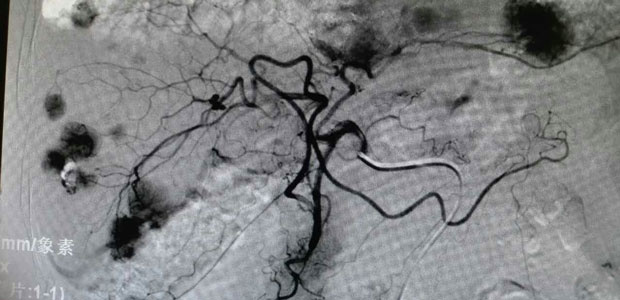
Tumor covers every inch of his right liver
Mr. Tao, 78 years old, a stage IV liver cancer patient came from Indonesia. His liver was covered by tumors. On accounting for the side effects of traditional surgery and chemotherapy, he rejected the treatment plan offered by local doctor.
To relieve the damage of treatment and improve the efficacy, the MDT in MCHG recommended interventional therapy for him, and microcatheter superselection treatment was performed precisely and effectively.
During the operation, the doctor firstly conducted femoral artery puncture with local anaesthesia to patient., channeling the front end of catheter into celiac artery, proper hepatic artery and arteries on both left and right liver to detect the tumor lesion.
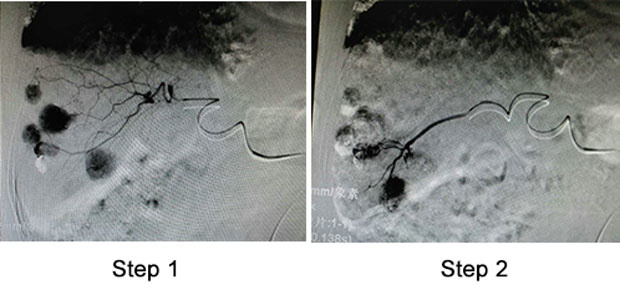
Secondly, the doctor identified each supplying artery by catheter and performed drug injection and embolism.
Thirdly, performed radiotherapy a second time, in which indicating that the lipiodol was well deposited and the tumor stain disappeared, tumor lesions were perfectly covered by drugs.
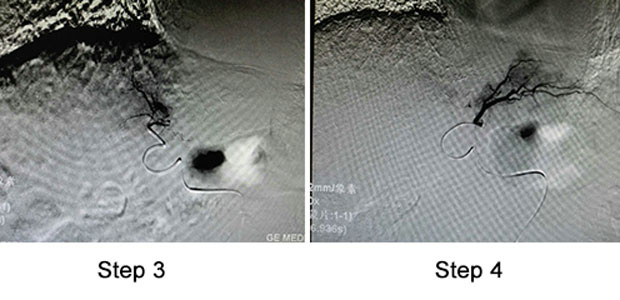
According to Zhen Yanli, director of Invasive Technology Department of MCHG, in microcatheter superselection, drugs are directly injected into tumor lesions through each specific supplying artery without doing damage to adjacent organs. Therefore the treatment features minimum damage but achieves maximum efficacy with less complications, more accuracy and lower risk of recurrence.
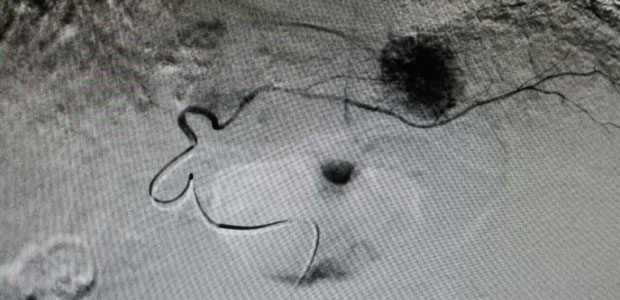
Step 5
As a JCI accredited cancer specialized hospital, St. Stamford Modern Cancer Hospital Guangzhou keeps close pace with worldwide medical development and perfectly utilizes international minimally invasive treatment to relieve the suffering of numerous patients from Southeast Asia during cancer treatment and improve their life quality. The successful application of precise interventional therapy also stands for a new milestone and dedication MCHG has made in medical service.
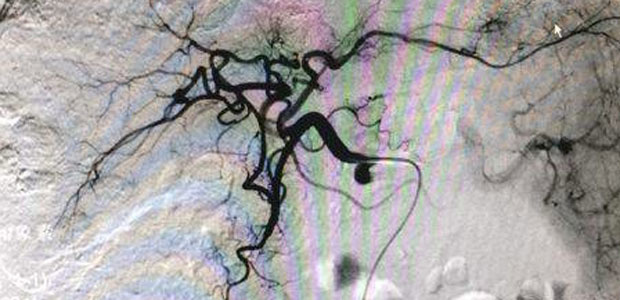
The operation was completed
*Surgery, in addition to the appropriate chemotherapy and radiotherapy, are effective in treating early cancer, but certain patients in late stage of cancer may not be tolerate surgery well as they can be relatively weak. A combination of carefully planned minimally invasive therapy, chemotherapy or radiotherapy can effectively reduce the side effects and discomfort of treatment and may help patient get better efficacy.













 viber
viber